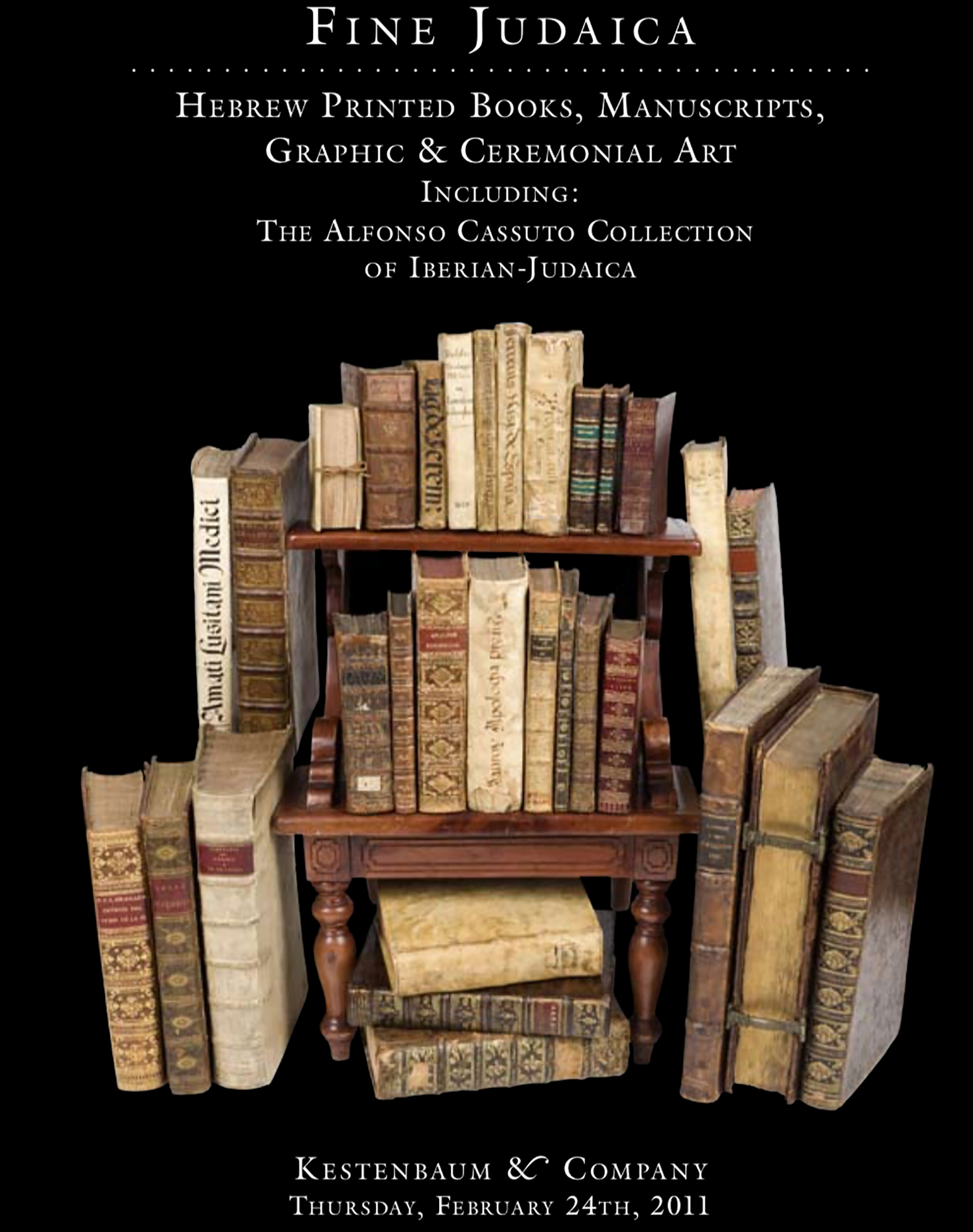(PEREIRA, ABRAHAM).

AUCTION 50 |
Thursday, February 24th,
2011 at 1:00
Fine Judaica: Hebrew Printed Books, Manuscripts, Graphic & Ceremonial Art Including: The Alfonso Cassuto Collection of Iberian Art
Lot 333
(PEREIRA, ABRAHAM).
Est: $6,000 - $8,000
Abraham Pereira, Merchant-Prince of Amsterdam, Establishes Yeshivah "Chesed le-Abraham" in Hebron.
Translation of the title-page: “The Book which contains terms and conditions with which the Senhores of the Mahamad of the Kahal Kadosh Talmud Tora will administer the legacy of Abraham Pererira constituting 46,000 florins. The interest being applied for the Hesger founded in Hebron, named Mercy of Abraham. In order to marry off orphans, in order to feed the poor, and to support the young of those who meditate upon the Divine Law. All together, the way in which each fund should be distributed. As well as the Haskamoth (Agreements) governing those who study in said Hesger of Hebron.”
Abraham Israel (alias, Thomas Rodriguez) Pereira (d.1699) was born in Madrid, and fled before the Inquisition to Venice and later Amsterdam. Fabulously wealthy, Pereira was for many years President of the Portuguese Jewish community of Amsterdam.
In the Sephardic usage, the term "Esguer" (Hebrew "Hesger") refers to a Talmudic academy. The scholars of the Pereira Yeshivah in Hebron, headed by R. Meir ben Chiya Rofe, were among the earliest believers in Shabthai Tzvi's messiah-hood. Pereira himself became a fervent follower of the pseudo-Messiah, travelling in 1666 as far as Italy on his way to greet the Turkish impostor, only to turn back after learning of Tzvi's forced conversion to Islam by the Sultan.
One may find an allusion to Pereira's Marrano background in our third tract on p.4: "For my sins, having wasted the flower of my youth away from the meditation of the Law, I am now filled with trembling and a great sense of obligation to find the most effective means of expiation for my sins. I have found that the most useful sacrifice would be to establish a Hesger in the Holy City of Hebron so that within its walls the Law of God will be studied."
In this tract too, we have a description of the quotidian life in the Hebron Academy, both as far as the role of the "Señor Ros-Iesib" (Rosh-Yeshivah), and the curriculum of the students, "Guemar, Beth Iosseph, Rabenu Mosseh (i.e., Maimonides)." (p.9).
See JE, Vol. IX, p.599; M. Kayserling, Biblioteca Española-Portugueza-Judaica (1971), p. 87; G. Scholem, Sabbatai Sevi: The Mystical Messiah (1975), pp. 5, 219, 358, 529-530, 755, 760-761,893. On Pereira's yeshivah in Hebron, see A. Ya'ari in Yerushalayim IV (1952) pp. 185-202.
Extremely rare. Not found in institutional libraries. (From the manner in which Kayserling refers to our work, it is apparent that he knew of it only by hearsay)
